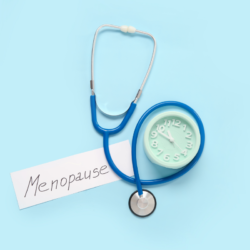The ways of losing weight are not the same whether you are 20 or 50: your motivations are different and your body changes and evolves… as do your eating habits.
To know whether you’re overweight or obese, you need to know your BMI (= body mass index). To calculate it, you’ll need an impedance meter, which determines your exact BMI and body fat. Alternatively, you can calculate it approximately yourself:
Example: A person who is 1.65 m tall and weighs 72 kg has a BMI of 26.5 kg m-² (72 / 1.65 * 1.65). This person is therefore overweight.
BMI = mass / height²
What is your BMI?
| BMI | Build |
| BMI < 18.5 | Underweight: lean |
| BMI between 18.5 and 25 | Ideal weight: normal |
| BMI between 25 and 30 | Overweight |
| BMI > 30 | Obese |
To lose weight successfully, you need to understand where it comes from, so that you can get rid of bad habits. Depending on our age, the reasons will be different, as will the means of losing weight.
Each stage of life poses different problems, so here’s our advice for taking care of yourself whatever your age.
0 – 20 years old
Special for the under-20s. If you’re a teenager and find yourself overweight, start by looking at the height and weight curves in your health record. Compare your height and weight with the curves suggested for your age. The way you see yourself may be distorted by the major transformations your adult body has undergone. It’s normal to put on weight when you gain extra centimetres: bones that are 10 centimetres longer weigh more. Don’t go on a diet without talking to your GP: you run the risk of slowing down your growth.
Eat plenty of varied dairy products to boost your growth: growing should be your priority. Remember that in adulthood, 1 kilo overweight goes unnoticed on a tall person. You need to eat enough of everything, with the exception of processed fats and sugars. You need plenty of protein to build muscle mass, fruit and vegetables for vitamins, minerals and fibre, and carbohydrates (rice, pasta, bread) for endurance. Go easy on sweets and crisps: you’ll probably see some weight loss if you eat them sensibly.
20 – 30 years old
Excess weight among students and young working people is generally due to an uncontrolled and unbalanced diet. You need to opt for a motivating diet that will enable you to reach your target weight quickly and then maintain it for life, having acquired healthy, balanced eating habits.
Physical activity can help you maintain a harmonious figure once the diet has enabled you to reach your desired weight. It is not advisable to do a lot of physical activity at the same time as dieting, as the body is doubly fatigued.
Choose fresh meat, vegetables and fruit rather than ready-made meals, fast food and pizzas. To avoid cravings, eat dried fruit or cereal bars.
Do a detox to eliminate accumulated waste and take a fat burner to make those extra pounds disappear.
Forexample, we recommend using:
1- Between meals, the Infusion Élimination Minceur Herboristerie Iphym: a blend of plants and a seaweed extract rich in iodine to help you lose weight naturally and promote drainage.
2- As a meal supplement, XLS Medical Capteur de Graisse, to reduce calories from dietary fat while still being able to enjoy the things you like to eat in moderation.
3- As a detox cure with MinciDetox from Pileje, for example, to detoxify your body and make your legs feel lighter and more comfortable, while balancing your nutritional intake during your diet.
30 – 50 years old
For adults, the body is generally used to dieting and the yo-yo effect. It therefore reacts less well. Your thirties mark a real turning point in your private and professional life. It’s the time when you start a family, move house, set up a business project or continue your career… With all these projects, you’re short of time and so you take less care of yourself.
To slim down effectively, draw up a schedule of meals to prepare during the week, have a hearty, balanced breakfast so you don’t feel hungry in the morning and avoid snacking. Finally, do some sport at least twice a week to exercise.
In addition, it is advisable to adapt a medical device, such as Oenobiol Weight Loss, to reduce fat and calorie absorption.
Ideal before the summer, you can also do a slimming cure with the Arkofluide Slimming Programme .
If you get the munchies, you can also use a detox drink like XLS Draineur Express to drain the body and help eliminate toxins.
age 50
Your fifties are a time of ” existential crisis “. You question your life, take stock of what you’ve done or not done, refocus on yourself and enjoy life. So we tend to let ourselves go, to stop paying attention to what we eat, to nibble and indulge..
Older adults (pre-menopausal women, menopausal women or andropausal men) often suffer from body changes due to hormonal variations and water retention. A diet should include sufficient dairy products to prevent decalcification, and proteins to prevent muscle loss.
Suitable sports include cycling, yoga, tai chi and walking, to maintain muscles without damaging joints.
Women over the age of 45 who want to reduce their small tummy during the pre-menopause and menopause periods can use Ménophytea Silhouette Flat Tummy.
To lose weight between meals, it is advisable to use an appetite suppressant such as Fresh Fucus Plant Extracts.
It is also advisable to take a Glucomannan Cure with Arkogélules Konjac, for example, to reduce calories during the summer months..
Wean yourself off foods rich in sugar, eat anti-cellulite foods, but above all drink plenty of fluids, especially slimming herbal infusions.
The impact of weight gain on chronic illnesses
Effective weight management is crucial not only for aesthetics and general well-being, but also plays a fundamental role in the prevention and management of chronic illnesses. Among these diseases, diabetes,hypertension and cardiovascular disease are among those most directly influenced by body weight.
Impact of weight management on diabetes
Being overweight or obese is a well-established risk factor for the development of type 2 diabetes. Excess weight, particularly abdominal fat, contributes to insulin resistance, a condition in which the body’s cells no longer respond effectively to insulin. Regulating weight not only helps to reduce the risk of developing diabetes, but can also help to manage this condition if it is already present. Even a modest reduction in weight, of the order of 5-10%, can lead to a significant improvement in glycaemic control in diabetics.
Hypertension and weight management
Hypertension, often linked to excess weight, can be significantly improved by targeted weight loss. Excessive body fat increases the workload on the heart to pump blood through the vessels, which can increase blood pressure. In addition, obesity can induce inflammation and increase the stiffness of blood vessels, exacerbating hypertension. Managing body weight through a balanced diet and regular physical activity can often reduce the need for anti-hypertensive medication and improve overall cardiovascular health.
Preventing cardiovascular disease through weight management
Cardiovascular disease, which includes heart disease and stroke, is closely linked to overweight and obesity. Weight management helps to reduce the main risk factors for these diseases, such as high blood pressure, high cholesterol and type 2 diabetes. A diet rich in fruit, vegetables, lean proteins and whole grains, while limiting saturated fats and added sugars, is essential for maintaining a healthy weight and supporting cardiovascular function.
Specific age-related needs
It is important to emphasise that weight management strategies need to be tailored to the specific age-related needs of each individual. For example, young adults will benefit from diets rich in protein and regular physical activity to prevent the early accumulation of risk factors. For older people, maintaining adequate muscle mass while managing weight can help prevent osteoporosis, improve mobility and reduce the risk of falls, while effectively managing existing chronic diseases.
Should you stay active to lose weight as you age?
Physical activity is a fundamental pillar of health at any age, but its importance becomes crucial when it comes to healthy ageing. Adapting exercise to your age and physical condition is essential to maximise the benefits while minimising the risk of injury.
Adapting exercise to age and physical condition
Adapting physical activity to individual abilities ensures that exercise is both safe and effective. For young adults, more intense and varied physical activity can be beneficial for increasing muscle strength, cardiorespiratory capacity and bone density. Exercises such as running, cycling, swimming or team sports are ideally recommended for this age group.
As we age, exercises should be adjusted to take account of the natural decline in muscle strength and flexibility. For middle-aged and older adults, activities such as brisk walking, yoga and water aerobics, which are less demanding on the joints, may be more appropriate. These activities help to maintain joint mobility, reduce the risk of chronic disease and improve mental well-being.
Importance of maintaining activity with age
Maintaining a regular level of physical activity is crucial to preserving quality of life as we age. The benefits of regular exercise go beyond weight management and include improving mental health, preventing cognitive deterioration, and strengthening social relationships through group activities.
Regular physical activity is also associated with a significant reduction in the risk of developing chronic diseases such as heart disease, type 2 diabetes and certain types of cancer. In addition, it plays an important role in managing the symptoms of existing illnesses, improving pain management and increasing the effectiveness of medical treatment.







